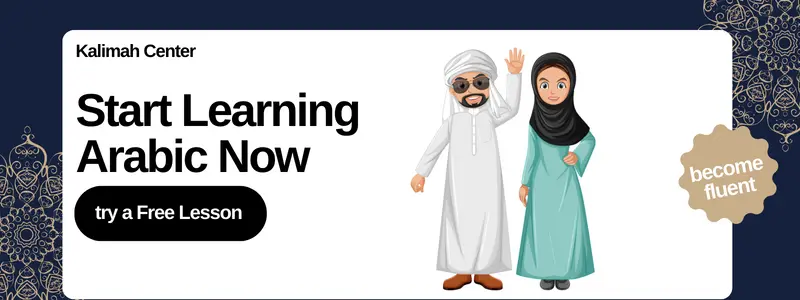In a nutshell: These Arabic worksheets are designed to make learning fun and easy for kids. Covering essentials like the alphabet, writing, reading, and numbers, they help build a solid foundation in the language through engaging activities that kids will enjoy.
Marhaba! I’m here today to share with you some amazing worksheets that will make learning Arabic fun and easy for your children.
These worksheets focus on essential skills like the Arabic alphabet, writing, reading, and numbers.
What Exactly are Arabic Worksheets?
Arabic worksheets are like special papers with fun activities to help kids learn Arabic. They have exercises for reading, writing, and understanding the language. It’s like a game to make learning Arabic easy and enjoyable!
You might ask, why worksheets? Well, worksheets are a powerful tool to help children grasp the basics of Arabic in a fun and interactive way. They allow kids to practice at their own pace and repeat exercises until they feel confident. This builds a strong foundation in the language, something that is very important when learning Arabic, especially for non-native speakers.

1. The 42 Arabic Alphabet Letters Worksheets
Worksheets focused on the alphabet help children recognize the unique letter shapes, associate them with their sounds, and practice writing them correctly.
One of the best resources I found is the “42 Arabic Alphabet Worksheet“ package. This set includes 42 colorful worksheets that are available in both Arabic-English and Arabic-only formats. Each worksheet is A5-sized, making it easy to carry around and perfect for use in various settings like Qur’an classes, Arabic centers, or even at home. The worksheets offer activities such as letter recognition, vocabulary building, tracing, coloring, writing, and matching.
What I love most about these worksheets is that they are versatile. You can use them with any theme or curriculum you’re following. The worksheets are engaging and help children practice letter identification while also allowing them to express their creativity through coloring and matching activities. Plus, the instructions are simple, making it easy for parents to guide their children through each activity.

Teacher’s Tip: Don’t just focus on rote memorization. Encourage children to use the letters they learn in context, like writing their names or labeling objects around the house. This makes learning more meaningful and fun!
2. Building Arabic Word Worksheets
Once children have mastered the alphabet, it’s time to start building words. Worksheets that focus on word formation help children understand how letters combine to create meaning.
A- Word Composition Worksheet
This activity is a word composition worksheet aimed at training children to compose words using separated and unordered syllables. The child tries to form a meaningful and useful word by arranging these syllables.
The word composition worksheet has a simple design, is useful, and is easy to obtain. It doesn’t require time or effort to assign a distinctive homework task or for children to complete it in class.
It’s great to have a competition between children for the fastest and most accurate answer. The child who can form the word quickly and correctly is the winner. The children will enjoy the spirit of competition and will have a beautiful and useful time.

B- Building Three-Letter Words
For a more creative approach to language learning, the “Building Three-Letter Words with Cubes” offers a unique way to build vocabulary through word-building activities. This resource uses cubes to create a fun and interactive way for children to learn new words and practice constructing words from letters.
The idea is simple: children cut out pictures and paste them on cubes, then match the correct word to the picture by arranging the letters. This hands-on activity is both entertaining and educational, making it an excellent tool for reinforcing vocabulary in a playful manner. It encourages children to think critically and helps them develop a deeper understanding of how words are formed.
This resource is particularly useful for parents looking to encourage their children to learn Arabic in a more relaxed and enjoyable way. By turning learning into a game, it helps reduce the pressure on children and makes the process of language acquisition more natural.
Know more about Arabic Learning Apps for Kids

3. Arabic Writing Worksheets
The next step is to practice writing. Writing worksheets help develop fine motor skills and teach children how to connect letters to form words and simple sentences.
My First Arabic Sentences
Thankfully, there are resources like the “My First Arabic Sentences“ that focus on interactive find-and-trace activities. These worksheets are specially designed for young learners aged 4-7, making them ideal for both homeschooling and classroom environments.
The worksheets are interactive, encouraging children to trace letters and build simple sentences. With 20 pages of build-a-sentence worksheets, children can learn how to form sentences with 2-4 words.
This is a great way to foster essential reading and writing skills in Arabic while keeping the activities fun and engaging. The customizable sentences also allow teachers and parents to adapt the content to the specific needs of each child.
For children a bit older, there are sentence-building worksheets that help introduce them to the fundamentals of Arabic sentence structure. This is a crucial step in learning how to communicate effectively in Arabic.
The simplicity of the sentences ensures that even beginners can follow along, while the repetitive nature of the activities helps reinforce their learning.

4. Arabic Reading Worksheets
Reading worksheets help children develop decoding skills and understand the meaning of words, sentences, and texts. Developing reading skills in Arabic can be challenging, but with the right worksheets, it becomes an enjoyable journey.

A- Easy Arabic Reading Worksheet
The “Easy Arabic Reading Worksheet“ is an excellent resource that focuses on taking your child’s Arabic to the next level.
This set of worksheets includes various activities designed to enhance vocabulary, improve pronunciation, and develop fluency. One of the highlights is the vocabulary list, which serves as a starting point. Children are encouraged to familiarize themselves with the Arabic words and their meanings before moving on to the matching activity. Here, they match Arabic words with their English translations, which helps reinforce their understanding.
The fill-in-the-blanks section is another valuable tool. Children use the vocabulary list to complete sentences, practicing how to use words in context. This method helps them develop a deeper understanding of how the language works and how words fit together to form meaningful sentences. The review and practice section ensures that they have mastered the material, making it an effective tool for both learning and assessment.

B- Comprehensive Arabic Reading & Learning Worksheets
Another fantastic resource is the “Comprehensive Arabic Reading & Learning Worksheets.” These worksheets are comprehensive, focusing on reading comprehension, vocabulary building, and grammar.
They are perfect for children who are ready to dive deeper into the Arabic language.
The worksheets are structured to improve the understanding of written Arabic texts, expand vocabulary, and learn the rules and structure of the language.
This makes them an ideal tool for building fluency and comprehension, as well as for reinforcing grammar and syntax.

5. Arabic Worksheet Numbers 1-100 Printable Activity
Arabic number worksheets help children recognize, write, and use Arabic numerals in simple calculations.
The “Arabic Worksheet Numbers 1-100 Printable Activity“ package is a comprehensive set of worksheets that cover everything from tracing numbers to counting and writing them in words.
This 16-page package is designed to cater to various cognitive skill levels, making it suitable for a wide range of learners.
The worksheets include five pages dedicated to tracing numbers, helping children develop the fine motor skills needed to write numbers accurately.
There are also engaging activities like counting numbers with fruits, coloring numbers with emojis, and arranging numbers in the sky. These activities make learning numbers fun and interactive, ensuring that children stay engaged throughout the process.
For more advanced learners, the worksheets offer activities like matching numbers and identifying the correct numbers. There is also a word game that challenges children to write numbers in words, further reinforcing their learning.
This package is an excellent resource for parents and teachers looking to provide a solid foundation in Arabic numbers for kids.

Kalimah Center: We make Arabic FUN!
Worksheets are good, but Kalimah Center is better! Our Arabic classes for kids have EVERYTHING:
- Fun teachers: They know how to make kids laugh AND learn.
- Exciting lessons: No boring stuff here! We use games, stories, and even cool pictures.
- We have special Arabic books JUST for kids! No hard stuff, only interesting stories they will enjoy.
- Right level for your child: We find out what they know first, then teach them the right things.
- Talking, writing, listening… ALL: We no just teach words, we teach how to USE Arabic!
See our classes and try one for FREE. Your kids will thank you!













